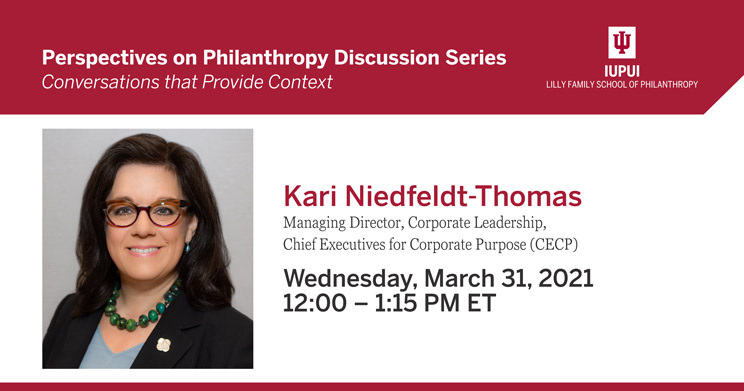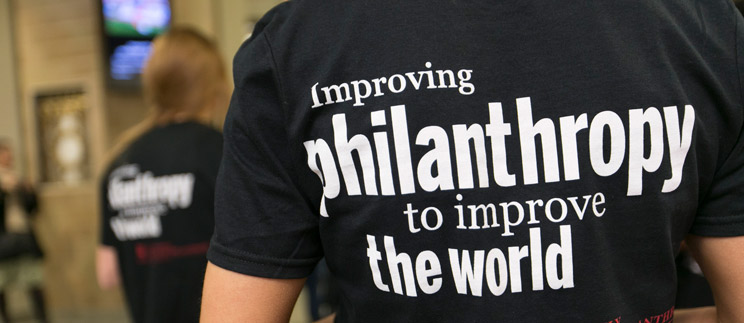Previously I discussed how a sense of mutual generosity among political competitors might be necessary for a democracy to function.
If the combination of deliberation and competition that characterizes constitutional democracy is to last, it may need philanthropy to be built in. Consequently, any policy that emanates from this system also relies on philanthropy. When it comes to successfully implementing policies crafted by democratic governments, they need to be seen as legitimate even by those who may not have voted for the party that generates the policy.
Generous attitudes toward political competitors and those over whom one has achieved power are important, not only morally but also to make government function well. Policy and philanthropy are intertwined in more ways besides regulating nonprofits and the tax incentives for giving money.
Political deliberation and competition rest on a diffuse civic space of norms and principles where we also find attitudes and habits that will either nurture or degrade politics' capacity to generate effective policy.
Today's public discourses proclaim irreconcilable certainties. "Yet disagreement is a feature, not a bug, of our constitutional democracy; the question is whether we can learn to disagree productively." So write recently Danielle Allen of Harvard and Paul Carese of Arizona State (the latter visited us in 2018). They helped develop The Education for Democracy Initiative because they believe that underinvestment in history and civics has contributed to our polarization and our unproductive divisions.
The word philanthropy does not make an explicit appearance in the roadmap they offer. However, associational activity and mutual assistance feature prominently, as do discussions of how we engage in community, and there are pedagogical approaches that point to student-led voluntary associations.
It is a wonderfully crafted compilation of resources for teachers as it connects rare fellow travelers like professors of history, K-12 teachers, former Secretaries of Education from both parties, and innovators in civics programming.
There are good reasons to worry that our government's policies will be less than ideal if the civic space in which citizens interact is not approached with the kinds of habits conducive to peaceful and effective political argumentation and competition. Certainly, schools are vital places to locate this kind of education. But we may need to go further, not only to reach adults who have not benefited from robust civics education but also to recognize that civics and history are also vital to our life-long learning and our capacities to govern ourselves, especially as our world is being remade in the wake of the pandemic.
At the core of the value of civics, it seems that self-government and self-realization rely on habits of selflessness that benefit those around us and ultimately us as well. A prominent concern is how our state and national governments will generate sound laws and policies. But there is more to civics and philanthropy than being a means toward a good, democratic government.
Even if it does not find ultimate expression in government policies, a life of civic engagement also has intrinsic value. It can also be its own reward.
But we need not stay in the realm of how the world should be. Practically, as we have moved towards (though not yet achieved) a society where all individuals enjoy equal status and dignity and have the legal power to decide matters for themselves, policy becomes much more widely distributed.
Yes, individuals' actions will eventually affect the outputs generated by governments, but there are essential and consequential policies that individuals, communities, and corporate entities create.
The word policy has Latin and French origins associated with the government and the polis' official work. More recently, the word has come to be used much more generally to mean "a definite course or method of action selected from among alternatives and in light of given conditions to guide and determine present and future decisions."
Large corporations with national and global reach promulgate policies that affect us all, with ubiquitous social platforms capable of silencing or amplifying voices and ideas through their declared policies or the policies implicit in the algorithms they create that govern activity on their platforms.
With half the world's online population active on one of Facebook's apps, the company's policies affect more people's consumption and generation of information than any single government. Corporations' policies regulate how we do our work, communicate and organize to protest, and raise money.
Today, digital platforms are receiving more scrutiny from government regulators, but even in the days of Andrew Carnegie, his decisions on running his business and treating his employees had government-like consequences for many. It is perhaps no wonder that emerging generations are increasingly pushing us to consider private enterprise's social impact. (On this topic, we are hosting CECP on March 31.)
There is the notion that foundation philanthropy represents the "passing gear" for society or the source of policy innovation and experimentation that can then be adopted by the government. And even when it is not adopted by the government, a "best practice" invented in one part of civil society can quickly become broadly adopted elsewhere. This happens through national nonprofit networks or membership associations, but also through the internet and social media.
Philanthropy, especially in America, has celebrated associational life with benefits for self-government, creativity, and independence. This has also been used to justify the role of private foundations, as they add to the plurality of ways of associating.
In this view, private associations and foundations can generate useful innovations in part because they are not accountable to others. An alternative view of their unaccountability and independence is that they skew the political process and political outcomes.
For example, James Madison was concerned about the danger of factions in general. For contemporary commentators, it is often concentrations of wealth that are seen to be skewing policies, both governmental and non-governmental, to their benefit and at the broader public's expense.
But we do not need to only look at large corporate entities to see important policies outside the realm of government. We all participate in a wide variety of policy realms, some of which are explicitly about philanthropy.
For example, during the pandemic, we have seen a resurgence of mutual aid societies, emergency relief funds at different scales, and rapidly proliferating discussions about community empowerment and trust-based philanthropy.
Community organizations also make policies, sometimes odious ones, such as when many white communities closed public swimming pools rather than integrate them. As Heather McGhee forcefully argues in The Sum of Us, such racist policies make everyone less well off.
Even in our neighborhoods and families, we make policies that eventually have effects on formal governmental actions. Still, they also importantly affect all our lives regardless of how close they get to formal political power. To what extent are they informed by a spirit of philanthropy? Or do they resort to a spiteful closing of public space to advance an exclusionary, and sometimes hateful, elevation of one’s own dignity by diminishing that of others?
In our everyday existence, we seek to give and to receive resources, attention, recognition, and fellowship. We have various ways of understanding these dynamics and the interplay of individual, small-scale, and large-scale interactions.
Economists often see the search for an advantageous exchange in many places. Political scientists see power infusing relationships among heads of state and within families. Psychologists see the human mind as the key player in their view of how each of us relates to ourselves and the world. Sociologists see broader social patterns manifesting themselves in local interactions. And anthropologists see patterns of culture and behavior through which we shape our ways of being in society. These are caricatures, but they serve to make a point.
We achieve insights when we see the world as composed of a singular dynamic, even though we know it only captures a partial if powerful truth. Many of us have favored explanations we like to apply across different contexts, our own versions of the myth that the world is held up by a giant turtle, which in turn rests on another turtle, all the way down to an infinite regress.
My favorite myth is that much that matters in my world rests on how philanthropy informs the policies we make, all the way down.
Best regards,

Amir Pasic
Eugene R. Tempel Dean





